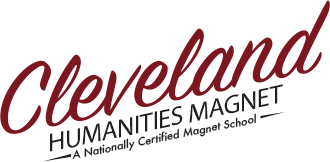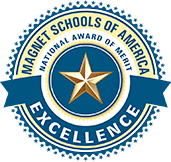AP European History Syllabus
Conference Hours:
Before or after class–prearranged
This year we will study the recent history of Western Civilization. It is an immense story extending back over the past several centuries. This survey course can hardly cover all events, nations, and individuals found within the narrative context of Western Civilization, which includes half of a millennium of human history. Not only will our studies include the previous seven centuries but it is also necessary to examine the role of geography covering an enormous portion of the Earth’s surface. From the Indus in the east, to the Atlantic in the west, to the Arctic in the north, and the Sahara to the south — Western Civilization includes it all and then some.
As a result of the colossal scope of this course we will be limited to the analysis of only certain important episodes and/or individuals. By doing so a better comprehension of humankind’s past, present, and perhaps, future shall be forthcoming.
REQUIRED TEXTBOOK
The Western Experience
AP EXAM
- Friday May 10, 2013 (afternoon/4 hrs.)
- Fee – $87 per student per test
EXAM STRUCTURE
- 80 Multiple Choice Questions
- 2 Free Response Essay Questions (4 paragraphs each)
- 1 DBQ (Document Based Question) (5 paragraphs)
COURSE OF STUDY
| FALL SEMESTER | TEXT READINGS (Chapters) | |
| UNIT I | Late Middle Ages, Byzantine, Islam, Crusades | 7-8 |
| UNIT II | The ‘Black Death’, 100 Years’ War, Fall of Byzantium, and The Renaissance | 11-12 |
| UNIT III | The Reformation, the Age of Discovery, Rise of the New Monarchs, Tudor England | 13-14 |
| UNIT IV | The ‘Thirty Years’ War’, Revolutions in France and England and the Scientific Revolution | 15-16 |
| UNIT V | Absolutism, Mercantilism, The Age of Enlightenment | 17-19 |
| UNIT VI | The French Revolution & the ‘Age of Napoleon’ | 20-21 |
| SPRING SEMESTER | ||
| UNIT VII | Congress of Vienna, Rise of Industrial Capitalism Romanticism and Liberalism | 22-23 |
| UNIT VIII | Revolutions of 1848,Nationalsim, the‘Great Age of Social & Political Progress’ | 24-25 |
| UNIT IX | New Imperialism, WWI, the Rise of the U.S.S.R, World Wide Depression and Nazi Germany | 26-28 |
| UNIT X | WWII, the Cold War, European Recovery, the Rise of Continental Unity/the European Union, and Europe in the New Millimium | 29-30 |
Recommended Websites:
GRADE SCALE (ENGRADE)
Each assignment, quiz, test, exam, essay, and special project(s) will be graded by using the GPA scale. The scale is as follows:
4 = A
3 = B
2 = C
1 = D
0 = F
I will add up your total for the 5, 10, 15 & 20 week report cards and divide by the number of grades (assignments and tests). This will allow me to calculate your own personal GPA by using the following scale:
| Grading GPA | Engrade Grade Percentages | |||
| 3.45 – 4.00 | = | A | = | 86.19% – 100% |
| 2.6 – 3.44 | = | B | = | 65% – 86.09% |
| 1.6 – 2.59 | = | C | = | 40% – 64.9% |
| 1.00 – 1.59 | = | D | = | 25% – 39.9% |
| 0 – .99 | = | F | = | 0% – 24.9% |
Tardies & Truants – 0/1 = E, 2 = S, 3 or more = U
* Special Tardy note: 10 Tardies or more for semester will drop you by one letter grade, 20 Tardies or more = two letter grade drop, etc.
Missing Assignments – 0/1 = E, 2/3 = S, 4 or more = U
*This includes missing quizzes, tests, and essays
Absences – missing twenty or more days = automatic FAIL
NO: Food, sugar drinks, gum, cellphones, pagers, CD/MP3/DVD players, or any other non-classroom item out and being used during classtime (EVER!) Or it will become mine for the semester!!!
GENERAL INFO ABOUT COURSE
This is a two semester course that is designed to prepare High School students for the college level Advanced Placement Exam given in May each year.
The nature of this course is an extensive and unyielding study of European History as taught at the university level. The pay-off is that if a student passes the national College Board Exam they will earn college credit. In addition to this, by simply taking this course every student receives more credit in their high school record than if they had taken a regular History class.
All students must take this course seriously and never get behind for, just like in college, you will find it very difficult to catch up and pull a descent grade. If you can keep up with the written work, readings, and seldom miss class then passing with a good grade is realistically obtainable.
THE MEANING OF THE AP EXAM SCORES
If your score on the national College Board Exam is the following:
5 You will receive automatic history college credit at most universities and colleges. (as well as a FREE LUNCH from me!!)
4 You will automatically receive college credit at most universities and colleges.
3 You will automatically receive college credit at most universities and colleges.
2 Is not a pass on the AP exam but earning a 2 is not a failure. You were probably close to a 3 but just didn’t quite get it. I can accept this score.
1 This is TOTALLY UNACCEPTABLE!!! Spending nearly 8 1/2 months in this class means that achieving a 1 is nearly impossible for a student who minimally applies themselves. If you only earn a 1 on the national exam then your time in my class was a complete waste of your and my time! Don’t take the exam unless you are totally committed!!!!
*So be very serious about choosing to take the national College Board Exam! It should be a total commitment on your part to prepare for the exam!
AP Test Score Grade Impact
The following applies to only those that take the National College Board Advanced Placement Exam in May:
| Test Scores | Grade Impact |
| 5 | Both semester grades raised to “A” |
| 4 | Both semester grades raised one letter grade |
| 3 | No change |
| 2 | No change |
| 1 | Both semester grades lowered one letter grade |
EXTRA-CREDIT
Value: For every 50 points of extra-credit a student earns, a “4” (“A”grade) is added into that student’s general grade.
There are several ways to earn extra-credit. This includes (NOTE: CD is accepted for all reports):
- Two book reports (100 pts. each/200 pts. max.)
- Two museum reports (50 pts. max./100 pts. max.)
Focus of Reports: Fall – Late Middle Ages to Napoleon, Spring – ‘Congress of Vienna’ to present
Deadline Dates
Fall semester – December 7, (Friday) 2012
Spring semester – May 17, (Friday) 2013
Conversion Table – Points earned / Grade(s) value (500 pts. Max.)
50 = 4
100 = 8
150 = 12
200 = 16
250 = 20
300 = 24
350 = 28
400 = 32
450 = 36
500 = 40
Book Report – Fall – Late Middle Ages to Napoleon, Spring – ‘Congress of Vienna’ to present
After selecting a title, make sure you have discussed your choice with the instructor before beginning to read. Then follow these guidelines in preparing your report.
Overall length: 8 to 12 pages (double spaced/14 font size)
- Analysis: 5 to 6 pages
- Examine main points and emphasis of book
- Critical evaluation: 3 to 4 pages (answer the following questions)
- How does the book historically match-up to your previous knowledge on the subject and current class material covered in lecture and/or your text?
- Does the author(s) deal fairly with the topic(s) discussed? (As far as you know.)
- Do you agree or disagree with the author’s point of view? (Explain why or why not and be specific.)
- Include a full bibliography at end of paper. (author, title, publisher, city published in & date published)
- Semester topics: Fall – 1200 to 1815 & Spring -1815 to present
- DUE DATES: (Fall) December 7, 2012 / (Spring) May 17, 2013 – *early ones happily accepted!
Museum Reports (Fall – Late Middle Ages to Napoleon, Spring – ‘Congress of Vienna’ to present)
Overall length: 4 to 5 pages (double spaced/14 font size)
- Your personal observations of the facility (1/2 page or more)
- Description (ID’s) of 25 or more exhibits – *list them in numerical order
- Photo of yourself at the museum (INSIDE)
- DUE DATES: (Fall) December 7, 2012 / (Spring) May 17, 2013 – *early ones happily accepted!
Pertinent Museum Info:
You can do a maximum of two museum reports (per semester).
(All of the following museums have student discounts. Call in advance for times and directions.)
- J. Paul Getty Museum – 1200 Getty Center Drive, L.A. (310/440-7300)
- Huntington Library Museum – 1151Oxford Road,San Marino (626/405-2141)
- Museum of Tolerance – 9786 West Pico Blvd., West L.A. (310/553-8403 / info. #2)
- Skirball Cultural Center – 2701 North Sepulveda Boulevard, L.A. (310/440-4500)
- Ronald Reagan Presidential Library – 40 Presidential Drive, Simi Valley (800/410-8354)
- Richard Nixon Presidential Library – 18001 Yorba Linda Blvd., Yorba Linda (714/993-3393)
- Norton Simon Museum of Art – 411 W ColoradoBlvd., Pasadena (626/449-6840)


